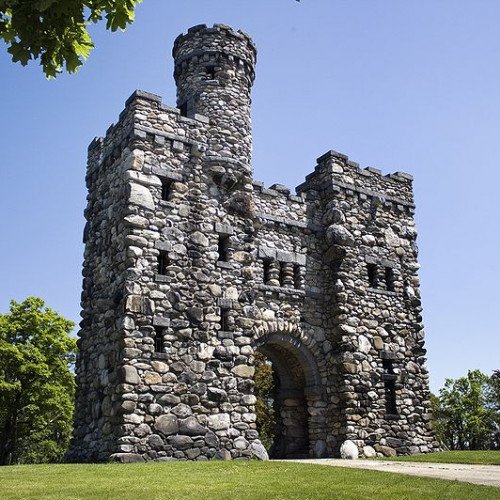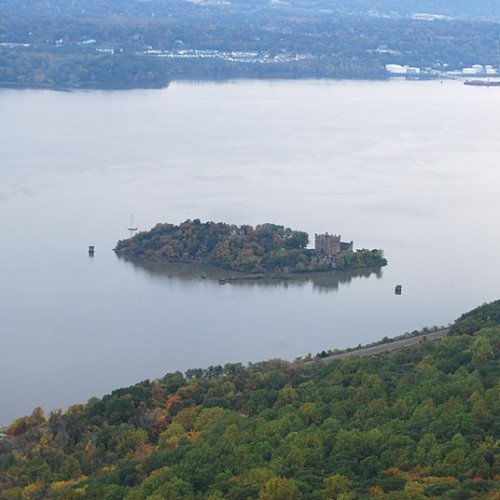Castles of "United States" BANCROFT TOWER vs POLLEPEL ISLAND

BANCROFT TOWER
Bancroft Tower is a 56-foot-high (17 m) natural stone and granite tower, which looks like a miniature feudal castle. It is located in Salisbury Park, in the city of Worcester, Massachusetts. It was erected in 1900, in memory of Worcester native politician, historian, and statesman George Bancroft. The tower was designed by Worcester architects Earle and Fisher. The cost of construction was roughly $15,000. Bancroft Tower is listed on the National Register of Historic Places. Bancroft Tower is located northwest of downtown Worcester, in Salisbury Park, a public park located west of Park Avenue and south of Drury Lane. It is a two-story stone structure, built out of boulders and cobbles, with a rock-faced granite exterior. It is asymmetrical in plan, with crenellated square towers at the corners and a taller off-center circular tower in between. To the right of that tower is an arched gate. This tower was erected by Stephen Salisbury III in honor of George Bancroft, a prominent historian and statesman who had been a childhood friend of Salisbury's father. It was one of three towers built on high points of the city, and is the only one to survive. The park and tower remained in Salisbury's ownership until his death in 1907. The tower was bequeathed to the Worcester Art Museum, which in turn donated it to the Worcester Parks Department in 1912. The Bancroft tower was listed on the National Register of Historical Places on March 5, 1980.
Statistics for this Xoptio

POLLEPEL ISLAND
Pollepel Island /pɒlɪˈpɛl/ is a 6.5 acres (26,000 m2) island in the Hudson River in New York. The principal feature on the island is Bannerman's Castle, an abandoned military surplus warehouse. Pollepel Island has been called many different names, including Pollopel Island, Pollopel's Island, Bannerman's Island, and Bannermans' Island. Pollepel is a Dutch word meaning "(pot) ladle" The island is about 50 miles (80 km) north of New York City and about 1,000 feet (300 m) from the Hudson River's eastern bank. It covers about 6.5 acres (26,000 m2), most of it rock. Pollepel Island was discovered by the Europeans during the first navigation of the Hudson River by early Dutch settlers in the Province of New York, at the "Northern Gate" of the Hudson Highlands. During the Revolutionary War, patriots attempted to prevent the British from passing upriver by emplacing 106 chevaux de frise (upright logs tipped with iron points) between the island and Plum Point across the river (see Hudson River Chains). Caissons from several chevaux de frise still rest at the river bottom. Still, these obstructions did not stop a British flotilla from burning Kingston in 1777. General George Washington later signed a plan to use the island as a military prison; however, there is no evidence that a prison was ever built there.